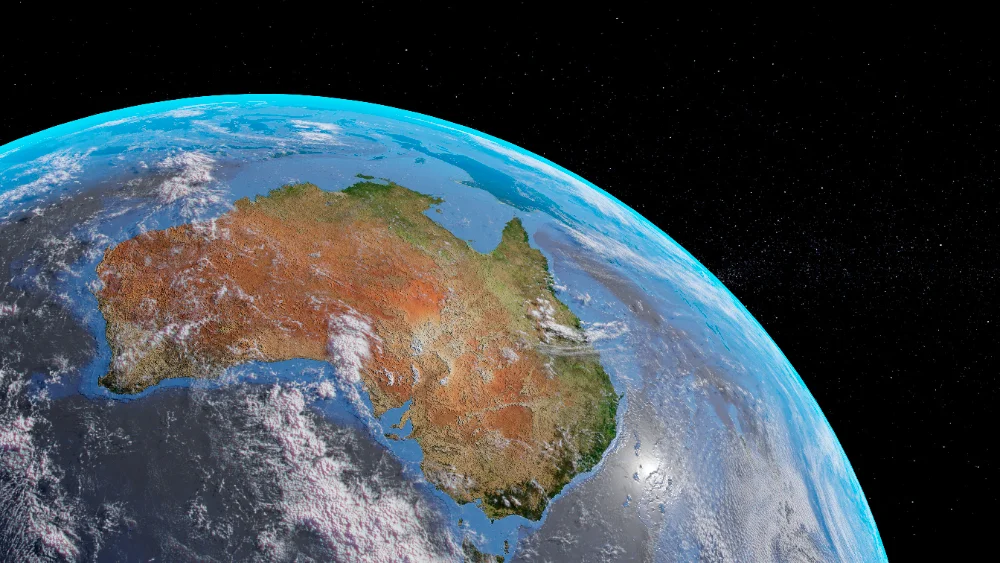I first stumbled upon the concept of geomagnetic reversal during a late-night YouTube rabbit hole. It sounded like science fiction at first: the idea that one day, your compass could point south instead of north. But the more I read, the more I realised it wasn’t a conspiracy or a Hollywood plotline—it’s real science, and it has already happened before.
So, what exactly happens when Earth’s magnetic poles flip? And should we be worried?
Let’s break it down.
What Is a Magnetic Pole Reversal?
At its core, a geomagnetic reversal is when Earth’s magnetic field flips: the magnetic north becomes south, and vice versa. This doesn’t mean the planet spins upside down (don’t worry—your world won’t literally turn over), but it does mean the compass you use for navigation would eventually point the opposite way.
This phenomenon is driven by the turbulent flow of molten iron in Earth’s outer core. It generates a magnetic field that isn’t static; it wobbles, drifts, and every few hundred thousand years, it flips entirely.
How Often Do the Poles Switch?
The last major reversal, known as the Brunhes-Matuyama reversal, occurred around 780,000 years ago. According to NASA and the USGS, the magnetic poles have switched at least 183 times in the last 83 million years.
Interestingly, we’re long overdue for the next one. The average interval between flips is roughly 200,000 to 300,000 years.
Signs It Might Be Happening Again
Earth’s magnetic field has been weakening by about 10% over the past 160 years, as per data from the European Space Agency (ESA). Scientists have observed irregularities, particularly over the South Atlantic Anomaly, a region where the magnetic field is especially weak.
Although it’s not definitive proof that a flip is imminent, it’s a compelling sign that Earth’s geomagnetic system is evolving.
What Would Happen During a Pole Reversal?
Let’s clear up a common myth: a pole reversal wouldn’t happen overnight. Based on geological records, these flips can take thousands of years to complete. But during that transitional phase, the magnetic field could become chaotic—with multiple north and south poles appearing across the globe.
Here’s what we might experience:
1. Magnetic Navigation Mayhem
Compasses and navigation systems relying on magnetic orientation would become unreliable. Aircraft, ships, and even migratory animals that rely on Earth’s magnetic field (like turtles and birds) could face major disruptions.
Real Example:
In 2019, the World Magnetic Model had to be updated earlier than planned because the North Magnetic Pole was moving unusually fast toward Siberia.
2. Increased Radiation Exposure
Our magnetic field acts as a shield against cosmic radiation and solar winds. A weakened field during the flip could allow more high-energy particles to penetrate the atmosphere.
This might result in:
- Higher radiation levels at aviation altitudes
- Disruptions to satellites and communication systems
- Increased risk of damage to power grids
Expert Insight:
Dr. Monika Korte, a geophysicist at the GFZ German Research Centre for Geosciences, states: “While the atmosphere still protects us, the increased exposure during a reversal could stress our technology-dependent systems.”
3. Wild Auroras Worldwide
The northern and southern lights (aurora borealis and aurora australis) could be visible in unexpected places due to changes in magnetic field lines.
Imagine seeing auroras in Madrid or Sydney—a stunning side-effect of magnetic chaos.
4. Possible Biological Effects
There is ongoing research on whether geomagnetic reversals affect biological systems. While there’s no solid evidence that past reversals caused mass extinctions, some studies suggest increased UV radiation and disrupted migratory patterns in animals.
A study published in Frontiers in Earth Science indicated that ancient magnetically sensitive bacteria showed stress during past reversals.
Would Humans Survive It?
Short answer: Yes.
Longer answer: Our ancestors have already survived multiple pole reversals. The fossil record doesn’t show a spike in extinction during these periods, suggesting that life on Earth is pretty resilient.
However, the modern human dependency on technology means we might face more infrastructural vulnerabilities than our ancestors did.
How Can We Prepare?
We can’t stop a magnetic reversal, but we can mitigate its potential effects:
- Upgrade satellite and power grid shielding against solar radiation.
- Develop navigation systems that rely on GPS and not just magnetism.
- Monitor magnetic field changes using satellite missions like ESA’s Swarm.
- Educate the public on geomagnetic phenomena to reduce misinformation and panic.
FAQs
Q: Can a magnetic pole reversal cause an apocalypse?
A: No. While there are risks to technology and infrastructure, there’s no evidence that it would cause global cataclysm or mass extinction.
Q: How long does a magnetic pole reversal take?
A: Typically thousands of years—slow enough for life to adapt.
Q: Are we currently in a magnetic reversal?
A: Not definitively, but the weakening field and anomalies suggest we might be heading toward one.
Q: Will the continents move or flip?
A: No. This is a magnetic phenomenon, not a tectonic one.
Final Thoughts
The idea of Earth flipping its magnetic field sounds terrifying, but the science shows us it’s a slow, natural process. The real risk isn’t the reversal itself but how it affects our technology-dependent society.
As someone who now triple-checks compass directions before a hike (thanks to researching this topic), I can tell you: understanding Earth’s magnetic dance isn’t just fascinating—it’s essential.
Let’s Discuss
Would you be prepared for a magnetic pole reversal? Have you ever experienced strange compass readings or seen auroras in unexpected places? Share your thoughts and stories in the comments below.
Sources:
- European Space Agency (ESA) Swarm Mission: https://www.esa.int/Applications/Observing_the_Earth/Swarm
- USGS on Geomagnetic Reversals: https://www.usgs.gov/faqs/what-a-geomagnetic-reversal
- NASA Earth Observatory: https://earthobservatory.nasa.gov
- Korte M. et al., “Geomagnetic Field Behaviour During Reversals”, Frontiers in Earth Science
Read Also: Why Are Hot Dogs Called Hot Dogs?




